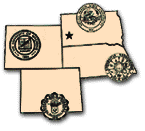Animal Science, Department of

Range Beef Cow Symposium
Date of this Version
December 1997
Document Type
Article
Abstract
Despite the fact that we live and operate in the age of technology, the age old question of precisely when to start or when to end supplementation of grazing animals remains. Often the determination of when to begin and when to end supplementation is not based on sound nutritional and/or economic reasons. Currently no one technology or gadget is available that precisely determines when that window of needed supplementation exists. Tradition and the educated guess method has served to make that decision.
The use of such programs as SPA (Standardized Performance Analysis) has allowed producers to more accurately determine the actual costs of maintaining cows on a year around basis. SPA information has shown that feed costs account for as much as 40-70% of yearly cow costs. Supplemental feeds makes up a significant portion of that amount and producers have become more interested in attaining the most out of their supplemental feed dollars. Two undesirable costs related to supplemental feeding can occur: 1) excessive cost due to overfeeding and 2) costs due to lost production which result from underfeeding.
Efficient supplementation programs require attention to three key factors: 1) determination of the window of need for supplemental feed, 2) determination of the appropriate supplement and 3) determination of the proper amount of supplemental feed. In order to develop an efficient supplementation program for grazing animals and to make the determination of when that supplementation should occur, one must have information in two areas. First, it is necessary to know the nutritive value of the forage being consumed by the animals. Secondly, to know the nutritional requirements of the animals consuming the forage. While, several factors, such as stage of production, sex of the animal, age of the animal and performance goals or objectives influence nutritional requirements, many sources (ex. National Research Council) exist that give reliable guidelines on nutritional requirements for animals. Such guidelines address one of the two above mentioned needs to develop and implement an economically efficient supplementation program. The use and application of the new NRC requirements for beef cattle is addressed by Dr. Ivan Rush in a subsequent paper and presentation.
The purpose of this paper is to address the remaining issue of determining the nutritional value of the forage being consumed by the grazing animals and to review current research on methodologies that address this issue of when to supplement grazing animals.


Comments
Published for Proceedings, The Range Beef Cow Symposium XV December 9, 10 and 11, 1997, Rapid City, South Dakota.